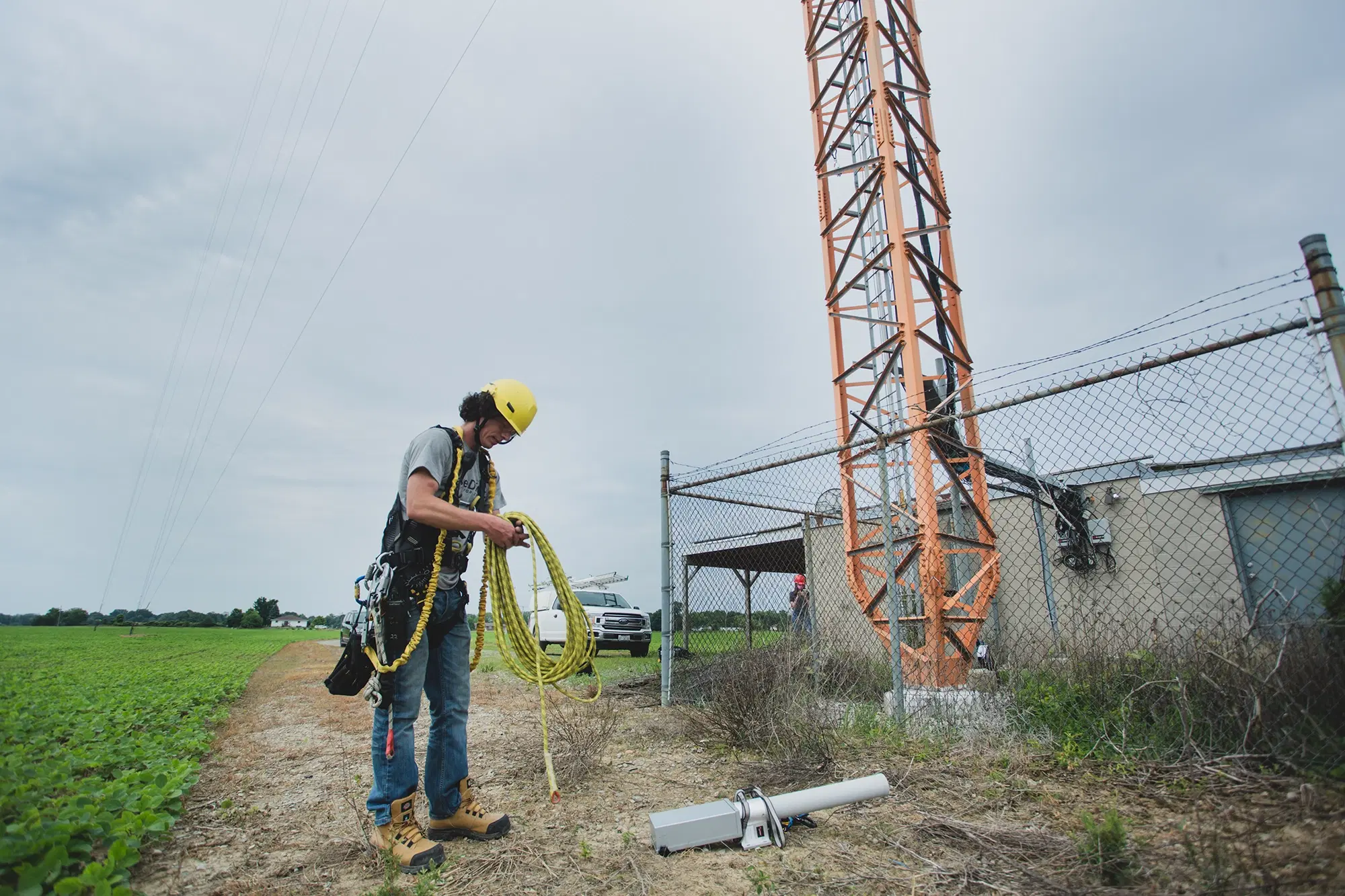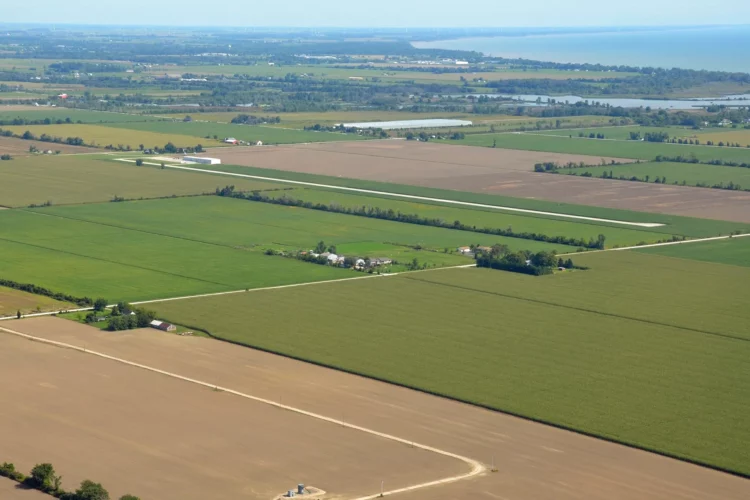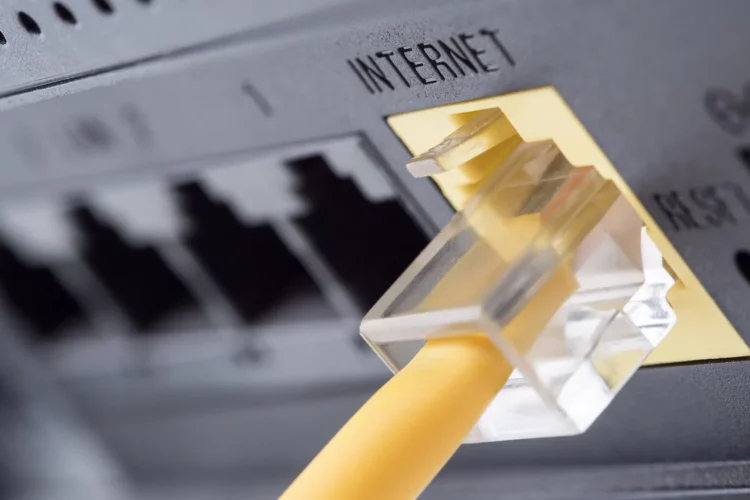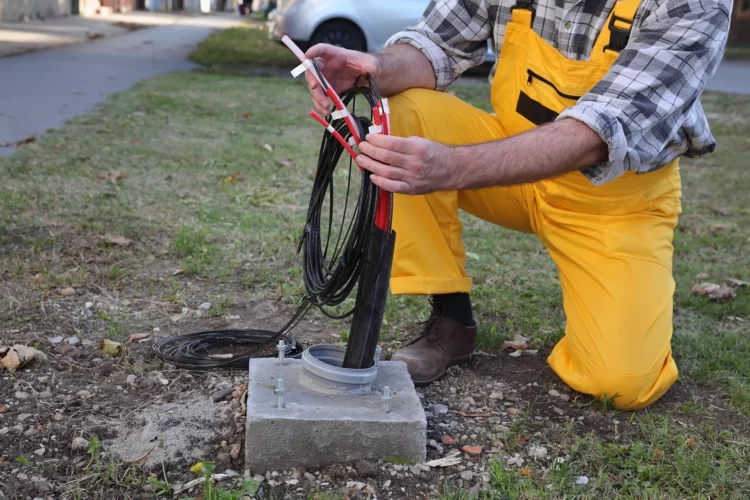Something called fixed wireless internet is a popular choice among homeowners, businesses and ISPs due to its applications for reliable rural internet.
WISPs (Wireless Internet Service Providers) are different from other DSL or Cable providers on how they deliver the internet to your home or business. Instead of using an optical fibre line or coaxial cable buried underground, it transmits all internet data to your home via wireless waves from a nearby tower base station.
Why is it popular?
The tower itself is fed by main internet data sources (hubs) that are powered by very high-speed fiber and with large data throughput rates. This signal is then beamed to your home via a point-to-point bridge.
WaveDirect would need to install a small receiver (dish) on your house to point back to the access point tower ensuring that you have both a clear line of sight and a strong signal connection.
Often times the network is optimized with the nearest wireless base station being your first option, or other secondary towers and even repeater sites multiplying the signal in the remote rural area.
This can create an array of wireless internet coverage that other homes and business can connect to. We are always upgrading towers and the technology that connects us. Once you have an access point that you can reach we bring the internet into your home via a regular CAT5 internet cable with can carry the broadband signal from the receiver (dish) to a wireless router in your house.
Then the signal can be split up from the router with multiple CAT5 (Blue Cable) connections to nearby computers or laptops, or you can enable WiFi for your home if your router has wireless capabilities.
From there multiple devices like smartphones, gaming consoles, tablets, and smart TVs can all pick up the wireless internet signal and produce some great entertainment for the family. Be careful though, most people need to know that every time you connect another device you will be splitting your internet speed with that new connection.
So if you had an internet speed of 50Mbps and 2 devices are connected, each device on average would be getting speeds around 25Mbps, depending on how much data the services are requiring.
Why Fixed Wireless for Rural Areas?
Fixed wireless internet is gaining more popularity because it’s fast and reliable as compared to other rural internet technologies (we cover in full detail below).
Some of the main reasons are fixed wireless is easier to set up (towers & dishes) were setting up the infrastructure for broadband services like DSL, Fiber or Cable is more expensive and might not warrant the cost for unpopulated areas.
Transporting and burying cables in the ground and getting all the necessary permits can be both time consuming and expensive. So it doesn’t make financial sense for some larger ISPs to invest in these rural areas, where they can’t see enough potential subscribers to justify the total costs.
Comparing Fixed Wireless to Satellite Internet
As with everything in life, there has been much debate over fixed wireless vs. satellite internet and which technology is actually better as a service. Opinions are just that, opinions… but we will cover the facts so you can make an informed decision for yourself and your home.
We will cover both the advantages and disadvantages of fixed wireless technology and talk more about rural satellite service for an internet connection.
Let’s talk about the advantages of fixed wireless first. As discussed earlier WISP’s can quickly expand their tower network and therefore, provide faster coverage in an area and create more access points.
Wireless and satellite providers are extremely different on the way that they deliver the internet to your home.
Let’s cover all the details…
Fixed Wireless Internet
Most fixed wireless providers today provide unlimited data for all their internet packages (Residential or Business). Which can be an attractive option compared to your mobile internet data caps and plan overage fees.
Also with new technology advancing all the time fixed wireless offers higher download speeds than DSL, dial-up and can even be mirror the speeds of cable and beyond. We even make use of cutting edge MU-MIMO technology, which stands for “Multi-user, multiple-input, multiple-output” and can cut down on things link interference or losing a connection altogether.
The only real problem with fixed wireless is there must be a clear line of sight from the receiver on your house to the nearest internet access point tower. Obstructions such as trees and hills can affect the quality of the service and can even prevent access to the internet.
Radio towers are used for fixed wireless internet and can be as tall as cellular towers if not bigger. They often have a stronger base, with more concrete to ensure future expansions.
Attached to the towers are very large radios or antennas which output wireless data for the homes to connect to. These antennas are generally larger than those seen in smaller Wi-Fi link networks and are designed for high DB output.
Tower locations can vary but are usually located within 8-10 miles of your house, so occasional weather or even a storm won’t interfere with the wireless signal that’s transmitting back and forth to your home.
Since the towers are close by and have to travel a shorter distance than satellite, the result is a very stable, reliable internet connection. After all, they are fed by the main T1 fiber lines which means super-fast internet for your home or business!
Satellite Internet
Getting a satellite connection is another option for those living in rural areas where no other internet options are available.
Although it also requires a dish and provides you with rural high-speed internet without using DSL or Cable, a satellite is different from fixed wireless in many ways.
First offer weather conditions are the main concern as they can affect satellite internet more than fixed wireless. The signal has to travel a very far distance and back.
Also, the connection uses 3 points not 2 like fixed wireless. Let’s explain. The satellite way out in the atmosphere acts like a mirror to bounce the signal from the “ground station” up to the satellite then back down to your home.
As the satellite itself, is not an official access point or source of the internet on its own, your internet signal has to travel up from Earth, bounce off of a satellite then get back to your home.
That means a storm in the next province can cause you internet problems!
This brings up the major issue with satellite internet, in a word…lag. Lag is no fun because the satellite’s position is much farther away from your home receiver than a fixed wireless tower would be, satellite internet suffers from high latency. So satellite vs. fixed wireless becomes a question of 22,300 miles Vs. 10 miles for your closest access point.
Which would you pick?
This can make even make a high-speed connection seem sluggish and has a big impact on things like online gaming and streaming video.
Satellite internet providers also need to set data caps, limiting the amount of data you can use on a monthly basis.
If you’re online frequently and watch a lot of videos, this is a big problem. One of the most important differences between the two services is the price. Despite its disadvantages, satellite internet is still more expensive than fixed wireless. Obviously, this is due to the cost of setting up satellites in space.
So when you take everything into account, it’s clear that fixed wireless is a popular choice, and for good reason.






